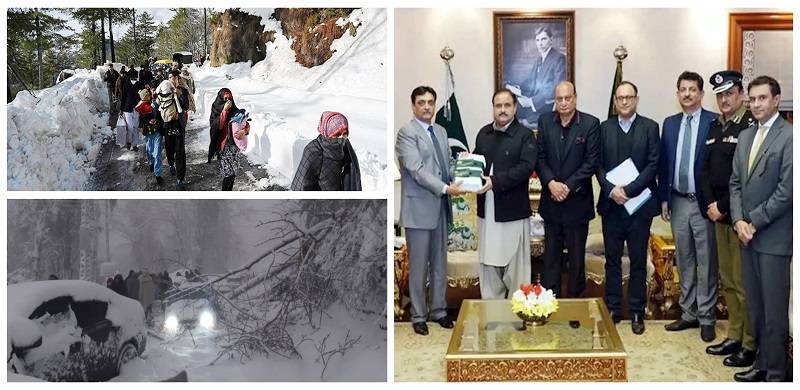
The investigation committee tasked with determining the causes of the Murree tragedy has found incidents of defective planning, delayed decision making and disorganisation among government entities had contributed to the deadly outcome in early January.
The 27-page report sheds light on the government's lack of planning or response which led to the death of 23 tourists.
Ten-thousand tourist vehicles were stranded in the area, the report revealed. The report indicated that there had been insufficient attempts to regulate traffic flow, while some staff members were allegedly unaware of the impending blizzard. Despite the severe traffic jams, vehicles continued to travel up the mountainside.
Other staff members reportedly sheltered in place, rather than perform their duties to assist stranded travelers.
Trees were left on the road as they froze over. Rescue staff, overburdened by mounds of paperwork, were unable to order a crane in time to clear the snow. Machines which were summoned ended up stuck in traffic, unable to reach the most urgent cases.
By Friday morning, the situation in Murree already had begun to deteriorate. The deputy commissioner (DC) and the chief police officer (CPO) had by this time not issued any warning of the snowy forecast. Similar snowbound traffic jams had occurred in the past, the report found, however the Murree administration failed to take action.
Punjab Chief Minister Sardar Usman Buzdar received the report earlier this week, after which he suspended 15 officials, including the Murree assistant commissioner, the Murree assistant superintendent of police (ASP), Rawalpindi chief traffic officer (CTO), and the Punjab Disaster Management Authority (PDMA) director.
When Buzdar was given the report, some criticized the event, stating that he should not have been photographed next to 'smiling officers', who presented the report to him as though it were an award. Buzdar came under similar fire when he travelled to Murree by helicopter, with some claiming the visit was more concerned with optics than response.
The 27-page report sheds light on the government's lack of planning or response which led to the death of 23 tourists.
Ten-thousand tourist vehicles were stranded in the area, the report revealed. The report indicated that there had been insufficient attempts to regulate traffic flow, while some staff members were allegedly unaware of the impending blizzard. Despite the severe traffic jams, vehicles continued to travel up the mountainside.
Other staff members reportedly sheltered in place, rather than perform their duties to assist stranded travelers.
Trees were left on the road as they froze over. Rescue staff, overburdened by mounds of paperwork, were unable to order a crane in time to clear the snow. Machines which were summoned ended up stuck in traffic, unable to reach the most urgent cases.
By Friday morning, the situation in Murree already had begun to deteriorate. The deputy commissioner (DC) and the chief police officer (CPO) had by this time not issued any warning of the snowy forecast. Similar snowbound traffic jams had occurred in the past, the report found, however the Murree administration failed to take action.
Punjab Chief Minister Sardar Usman Buzdar received the report earlier this week, after which he suspended 15 officials, including the Murree assistant commissioner, the Murree assistant superintendent of police (ASP), Rawalpindi chief traffic officer (CTO), and the Punjab Disaster Management Authority (PDMA) director.
When Buzdar was given the report, some criticized the event, stating that he should not have been photographed next to 'smiling officers', who presented the report to him as though it were an award. Buzdar came under similar fire when he travelled to Murree by helicopter, with some claiming the visit was more concerned with optics than response.

